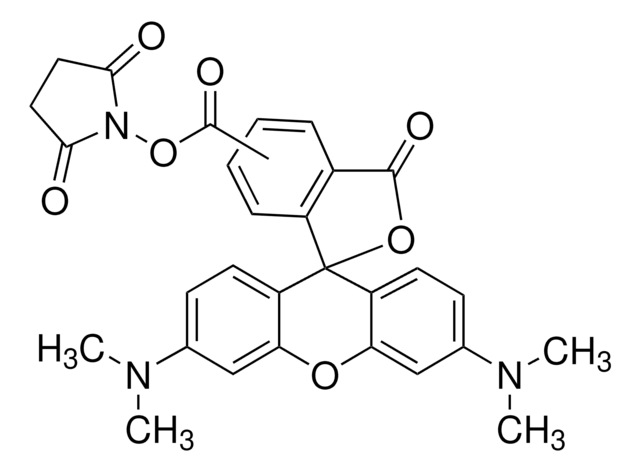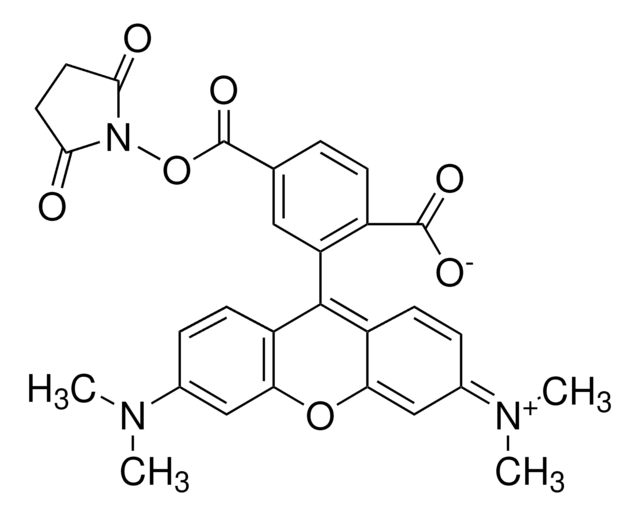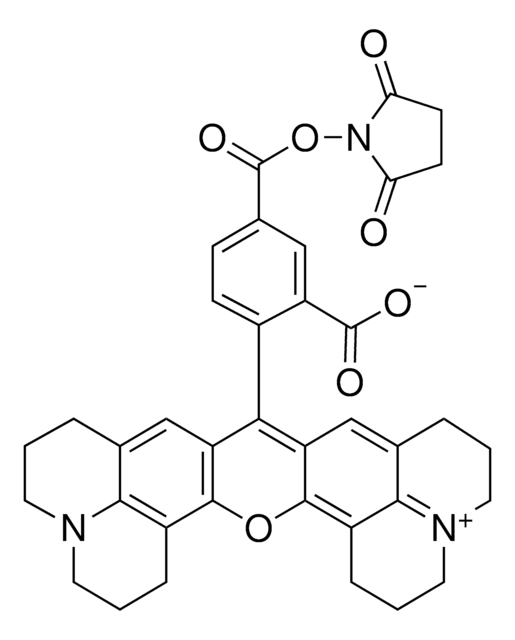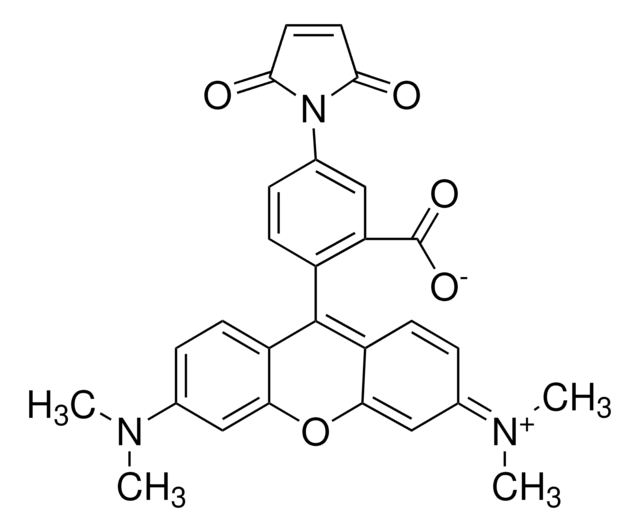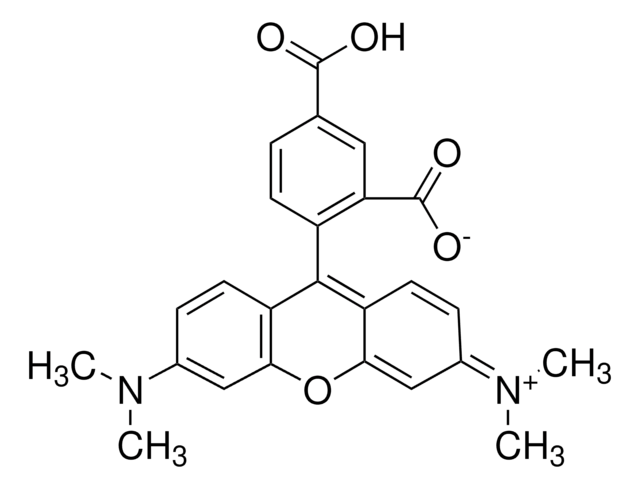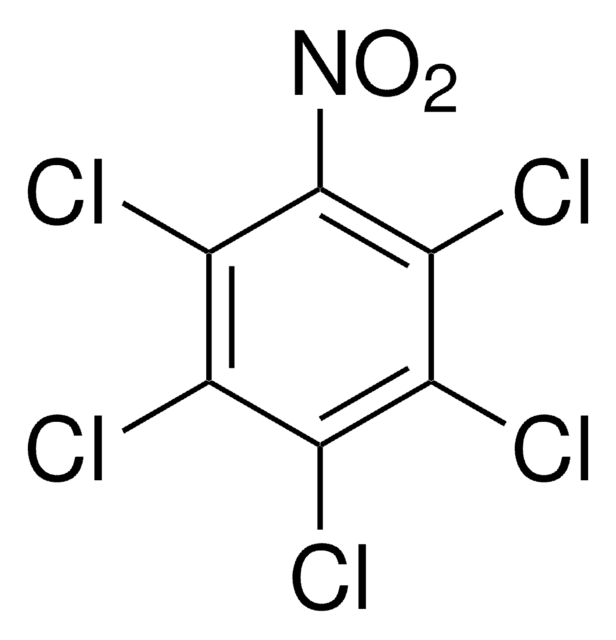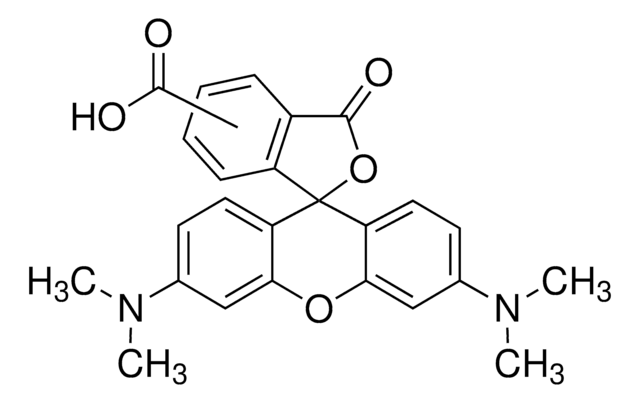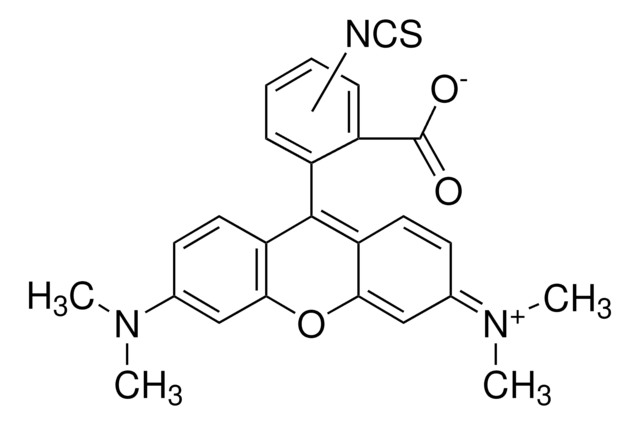Kluczowe dokumenty
53048
5-Carboxy-tetramethylrhodamine N-succinimidyl ester
BioReagent, suitable for fluorescence
Synonim(y):
"4-Carboxytetramethylrhodamine N-succinimidyl ester", 5-TAMRA
About This Item
Polecane produkty
linia produktu
BioReagent
Poziom jakości
rozpuszczalność
DMF: soluble
acetonitrile: soluble
fluorescencja
λex 543 nm; λem 578 nm in 0.1 M phosphate pH 7.0
przydatność
suitable for fluorescence
temp. przechowywania
−20°C
ciąg SMILES
CN(C)c1ccc2c(OC3=C\C(C=CC3=C2c4ccc(cc4C([O-])=O)C(=O)ON5C(=O)CCC5=O)=[N+](\C)C)c1
InChI
1S/C29H25N3O7/c1-30(2)17-6-9-20-23(14-17)38-24-15-18(31(3)4)7-10-21(24)27(20)19-8-5-16(13-22(19)28(35)36)29(37)39-32-25(33)11-12-26(32)34/h5-10,13-15H,11-12H2,1-4H3
Klucz InChI
VWFRSNKRTNUMET-UHFFFAOYSA-N
Powiązane kategorie
Zastosowanie
Inne uwagi
Nie możesz znaleźć właściwego produktu?
Wypróbuj nasz Narzędzie selektora produktów.
produkt powiązany
Kod klasy składowania
11 - Combustible Solids
Klasa zagrożenia wodnego (WGK)
WGK 3
Temperatura zapłonu (°F)
Not applicable
Temperatura zapłonu (°C)
Not applicable
Środki ochrony indywidualnej
Eyeshields, Gloves, type N95 (US)
Wybierz jedną z najnowszych wersji:
Masz już ten produkt?
Dokumenty związane z niedawno zakupionymi produktami zostały zamieszczone w Bibliotece dokumentów.
Klienci oglądali również te produkty
Produkty
Fluorescent Labeling of Peptides
Pochodne chromogeniczne i fluorogeniczne są nieocenionymi narzędziami w biochemii, mającymi liczne zastosowania w enzymologii, chemii białek, immunologii i histochemii.
Nasz zespół naukowców ma doświadczenie we wszystkich obszarach badań, w tym w naukach przyrodniczych, materiałoznawstwie, syntezie chemicznej, chromatografii, analityce i wielu innych dziedzinach.
Skontaktuj się z zespołem ds. pomocy technicznej